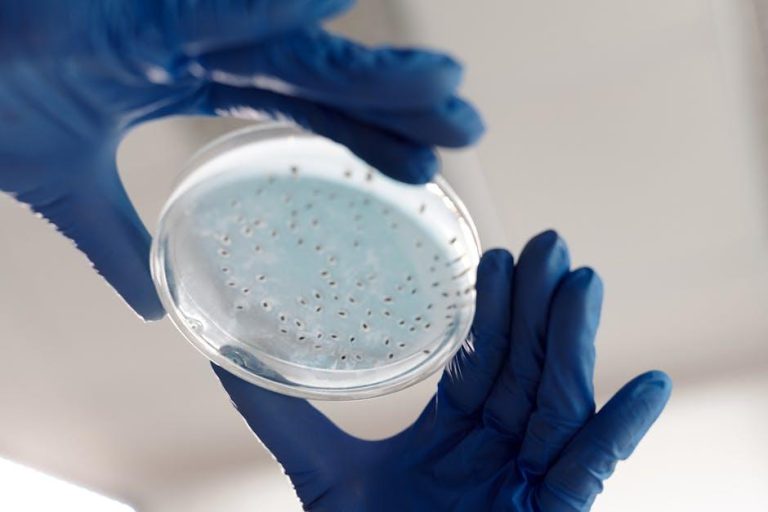
Distribution Characteristics of Microbial Aerosols and Optimization of Protective Methods During Ultrasonic Scaling Procedure – Nature
Ultrasonic scaling is a cornerstone of dental prophylaxis, effectively removing plaque and calculus with precision and minimal discomfort. However, the procedure also generates microbial aerosols, which can pose infection risks in clinical settings. Understanding the distribution characteristics of microbial aerosols and optimizing protective methods is crucial for safeguarding dental professionals and patients alike.
Introduction
With increasing awareness of airborne disease transmission, especially in healthcare environments, the dental sector faces unique challenges. Ultrasonic scaling, while highly effective, inadvertently disperses a mixture of saliva, blood, and microorganisms into aerosols. This article dives deep into the nature and spread of these microbial aerosols and explores practical, evidence-based methods to optimize protection during ultrasonic scaling procedures.
Understanding Microbial Aerosols in Ultrasonic Scaling
Microbial aerosols are airborne particles comprised of bacteria, viruses, and other microorganisms suspended in droplets created during dental procedures. Ultrasonic scalers vibrate at high frequencies, creating a mist-like spray when combined with water irrigation, which can carry microbes far beyond the immediate treatment site.
Key Distribution Characteristics
- Aerosol Size: Particle sizes range widely, with droplets under 5 micrometers capable of remaining airborne for extended periods.
- Spread Distance: Microbial aerosol droplets can disperse up to 2 meters, contaminating surfaces and potentially infecting nearby people.
- Environmental Impact: Factors such as room ventilation, humidity, and air flow significantly affect aerosol behavior and microbial load.
- Concentration Gradient: The highest microbial densities occur near the patient’s oral cavity, decreasing with distance.
Microbial Composition
The aerosolized particles during ultrasonic scaling predominantly include oral bacteria such as Streptococcus mutans, Porphyromonas gingivalis, and respiratory pathogens like influenza viruses. Recent studies highlight the persistence of certain pathogens, emphasizing the need for rigorous protective protocols.
Optimizing Protective Methods During Ultrasonic Scaling
Protecting dental healthcare workers and patients from aerosolized microbes demands a proactive, multi-layered approach. The following evidence-based strategies minimize contamination and exposure risk.
1. Pre-Procedural Mouth Rinses
Employing antimicrobial mouthwashes (e.g., chlorhexidine or povidone-iodine) before scaling significantly reduces the microbial load in the oral cavity, thereby lowering aerosolized bacteria.
2. High-Volume Evacuation (HVE)
Using HVE devices during scaling efficiently captures aerosols at the source. Positioning the evacuation tip close (<6 mm) to the scaler tip can reduce up to 90% of airborne particulates.
3. Personal Protective Equipment (PPE)
- Masks: Use of N95 or equivalent respirators offers superior filtration compared to standard surgical masks.
- Face Shields: Provide an extra barrier against splatter and larger droplets.
- Protective Gowns and Gloves: Prevent skin and clothing contamination.
4. Environmental Controls
- Ventilation: Enhancing air changes per hour (ACH) reduces aerosol residence time.
- HEPA Air Purifiers: Portable air cleaners equipped with HEPA filters can trap microbes effectively.
- Scheduling: Allow sufficient time between patients for aerosols to settle and for air exchange.
5. Ultrasonic Scaler Settings and Alternatives
Adjusting scaler power and irrigation rates can influence aerosol generation. Lower power settings produce fewer aerosols but should balance efficacy. When possible, manual scaling methods can reduce aerosol risks, although they may increase procedure duration.
Case Study: Implementing Protective Protocols in a Busy Dental Clinic
In a recent case study published in Nature, a dental clinic incorporated an optimized protective protocol combining pre-procedural rinses, HVE use, PPE upgrades, and environmental ventilation improvements. Over six months, microbial air sampling showed a 75% reduction in aerosolized bacterial counts during ultrasonic scaling, and no cross-infections were reported among staff or patients.
Benefits & Practical Tips for Dental Professionals
- Improved Safety: Minimizes occupational exposure risks and infection transmission.
- Patient Confidence: Visible protective measures enhance trust and peace of mind.
- Operational Efficiency: Incorporating air purification and scheduling optimizations supports smooth patient flow without compromising safety.
- Regular Training: Educate the dental team on proper PPE usage and aerosol management.
- Routine Equipment Maintenance: Ensure ultrasonic scalers and evacuation devices function optimally.
Table: Summary of Protective Measures & Their Effectiveness
| Protective Method | Effectiveness | Implementation Tips |
|---|---|---|
| Pre-Procedural Mouth Rinse | Reduces up to 68% microbial load | Use 0.12% chlorhexidine, rinse for 30 seconds |
| High-Volume Evacuation (HVE) | Removes up to 90% aerosols | Keep tip within 6 mm of scaler |
| N95 Respirators | Filters 95%+ airborne particles | Fit test for proper seal |
| HEPA Air Purifiers | Reduces airborne pathogens by 80% | Run continuously during procedures |
| Room Ventilation (Enhanced ACH) | Speeds aerosol clearance | Target 6-12 air changes per hour |
Conclusion
The distribution of microbial aerosols during ultrasonic scaling presents a tangible infection control challenge. By comprehensively understanding aerosol characteristics and deploying layered protective strategies—including pre-procedural rinses, high-volume evacuators, enhanced PPE, and environmental controls—dental professionals can dramatically reduce infection risks. Continuous vigilance, combined with evidence-based adjustments, ensures both effective dental care and maximal safety in today’s clinical environments.


